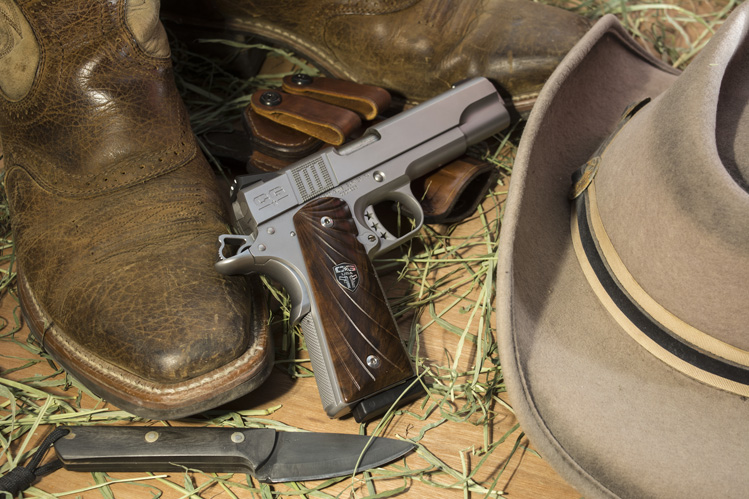
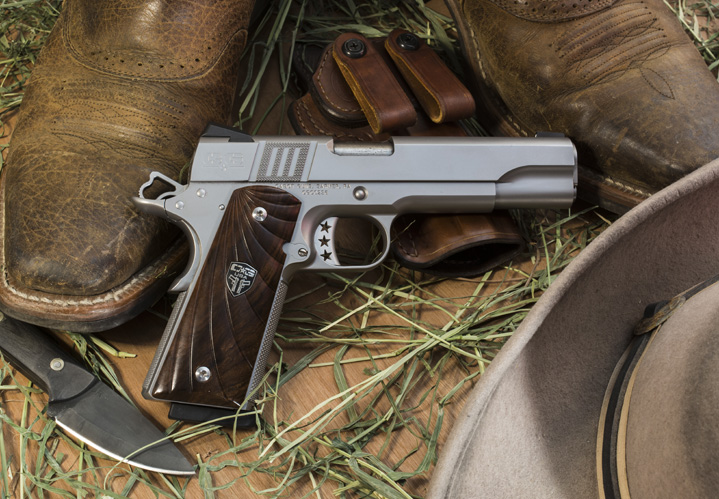
It’s an incredible offer, to be loaned a piece of high art. You jump on it, because when will anyone ever loan you a famous piece of art just for the sake of giving it some publicity? And to handle a Van Gogh…truly a unique opportunity. Most art lovers will never see one in person.
But at the end of a few short weeks, you have to give it back. And you feel soulless and empty, and now you have to explain in a magazine what it was like to have that piece of art.
The $5000 Cabot Guns S100 is going back tomorrow.
And we feel empty and soulless.
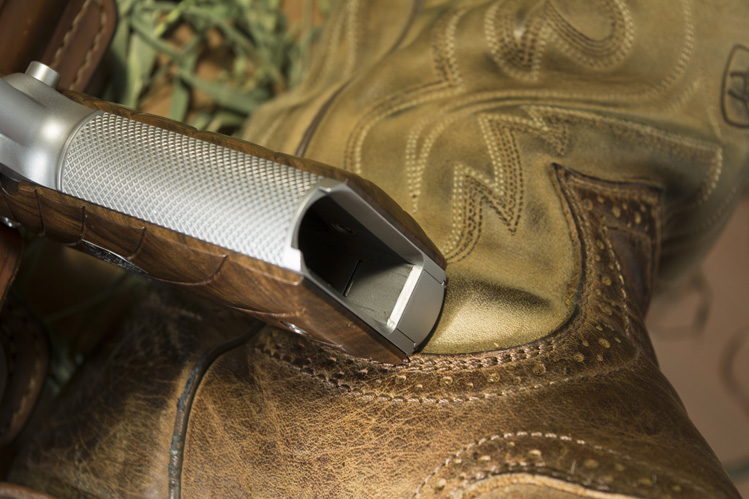
But you could buy a hundred 1911s with a similar list of features. Hell, for the price of this one you could probably buy five different 1911s with similar features. Why would you blow five thousand dollars on this particular gun?
There is a damn good answer to that, and it’s tied directly to our misery at handing this piece back to its rightful owner.
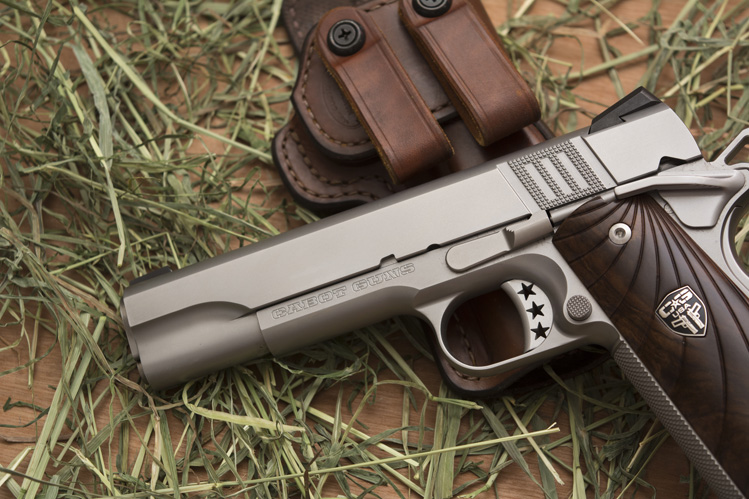
That is why we’re calling this pistol art: this level of attention to detail isn’t just impressive, it’s obsessive. This isn’t a company taking factory Jeeps and bolting on enough parts to make serious off-road machines, this is a company taking the original Willys blueprints and machining every single part out of bar stock to tolerances the designer never even imagined, and then assembling every single component with a torque wrench most people would need to take out a loan to buy. Re-engineering every known failure point to be an aesthetic match on the classic jeep, but concealing space-age metallurgy and design to render it superior in every measurable way.
Yes, readers, this is 1911 art, and shooting a masterpiece is a unique experience.
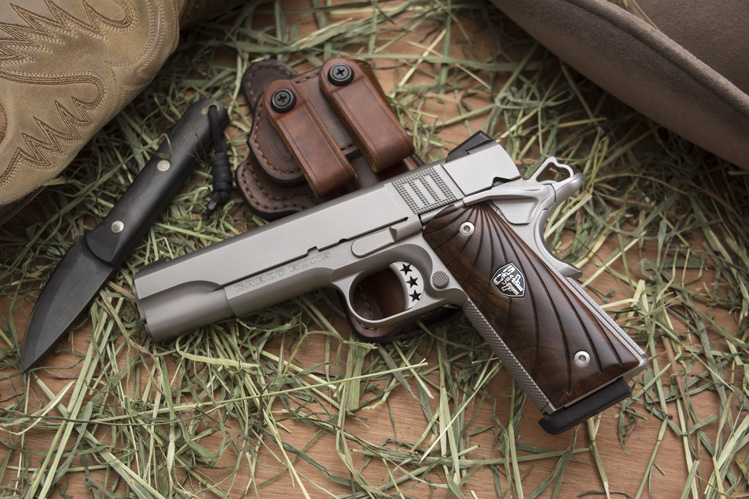
But the travel and break are absolutely perfect, and the reset is exactly its duplicate: clean, tactile, predictable, and exactly the right length. This is no “take meat off until it’s really easy to shoot” trigger. It’s simply the trigger you get when you machine every part out of bar stock and finish every surface to perfection and tune every spring to its exact ideal weight.
Similarly, the detents on the safety and slide lock are exactly perfect. The thumb safety clicks up and down with little effort but the detent is still pronounced and positive; again, this is the result not of lightening springs when the detent plungers sit too tightly in their pockets but of making sure every detail is in perfect balance: the plunger pockets are the exact right depth and shape, the plunger nose is perfectly smooth, the spring exerts the exact right amount of pressure.
The same philosophy is carried over into the accuracy department. Rather than the ultra-tight barrel fittings of some zero-clearanced customs, the Cabot 1911 uses a gently snug barrel bushing which can be removed with relative ease, but which, through careful alignment of every contact surface and their customary extremes of care in machining, still turns out the superb accuracy of the ultra-tight builds, but without the drawbacks of a difficult rack, extreme sensitivity to variations in ammunition sizing, or the need for excessive recoil or main springs with their attendant wear issues.
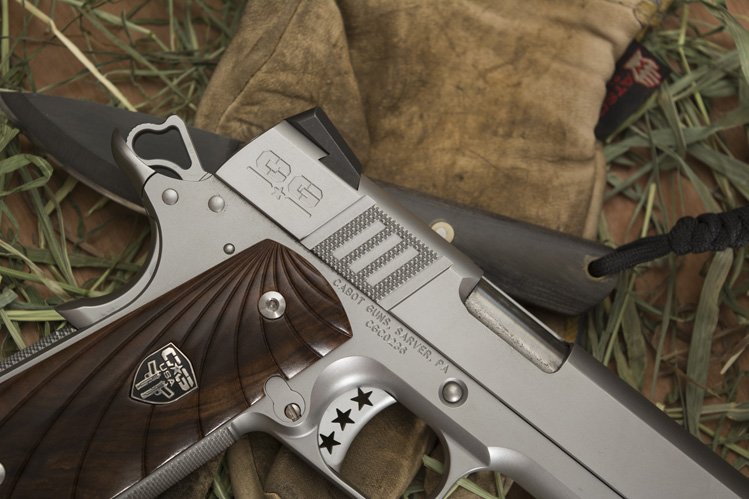
Our one significant quibble is the magazines. Granted, serious 1911 people have a stack of magazines and factory-supplied magazines are usually benched. But the Cabot 1911 had a few failures to lock back on its own magazines while running flawlessly on our Wilson ETMs. The Cabots are really Checkmates, with the signature Checkmate leaf-spring follower. It’s a good magazine and we can hardly ask Cabot to include magazines from Wilson, a direct competitor, but we found the Checkmates less forgiving of different ammo profiles. Part of that relates to the Checkmate’s continued use of the controlled-feed design (which was the original intent of John Moses Browning) but it does require that the gun be a little more broken in than ours was, since of course it was brand new. We’d expect that to go away after a few hundred rounds but if you spend five thousand dollars on a pistol and it doesn’t lock back every time with the supplied mags, we’d forgive you if you’re a little taken aback. But switching magazines to our preferred brand turned the Cabot 1911 into a precision pistol with the reliability of a steel-shanked hammer.
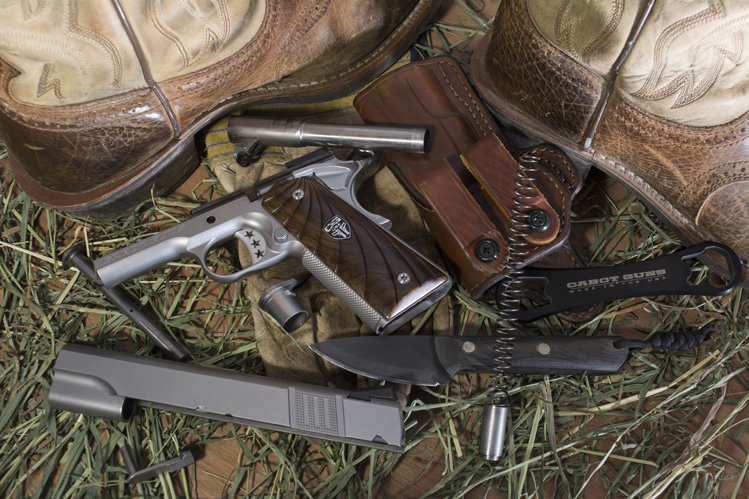
And even if you really like art, you could buy several spendy paintings for the cost of one masterpiece, and the 1911 world is similar. Once you approach the three thousand dollar mark, if you’re looking for clear performance gains between different pistols, you’ll start to frustrate yourself, because all of these limited production semi-customs shoot really well, and it isn’t really a question of who’s going to give you an accurate, reliable pistol; they’re all accurate and reliable. So it’s really a question of what art you want to collect.
That being said, the editor of Calibre shoots a 1911 that would cost around $3000 in Canada to buy new right now, and while the accuracy and reliability are identical between it and the Cabot 1911, the precision with which the controls of the Cabot are machined radically exceeds those of the editor’s pistol. There is no question that the Cabot is demonstrably more carefully constructed and the differences are subtle but they are measurable.
And that is why, when someone offers to loan you a Van Gogh, even if you already have art on your wall, even if you already know you’ll hate that empty feeling you have when the time comes to give it back, even if you’re a jaded art critic who thinks he’s seen it all and can’t get excited about anything anymore…you take the masterpiece and you enjoy it while you can, because opportunities like that don’t come along often.
Sidebar: Talking 1911s with Rob Bianchin of Cabot Guns
Rob Bianchin is an interesting character. For a man overseeing the ultimate all-American (right down to the grower of the walnut trees that are used for the grips), he’s surprisingly, well, not actually American by birth. He’s Canadian. Originally an economist who studied at the University of Western Ontario, he founded Cabot Guns six years ago as what he describes as a “lifestyle business.” Knowing full well that Cabot would never be a huge production shop cranking out tens of thousands of guns each year allowed Bianchin to focus on his true interest: precision.
“We sought to build a gun in an impossible way,” he says. “We wanted perfection, from a block of steel.”
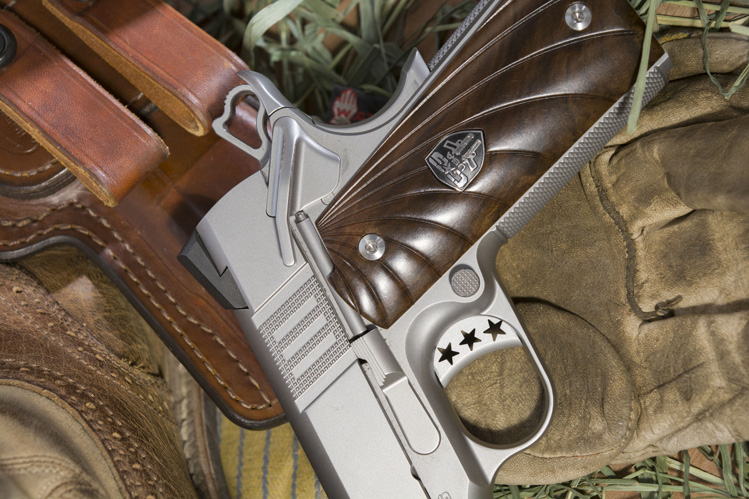
“Oh, thanks for noticing,” said Bianchin. “We spent weeks on that. But you know what’s really hard? The rhomboid checkering.”
Pardon?
It turns out the checkering on the grip isn’t your usual square pyramid pattern; it’s rhomboid pyramids, made by cutting the checkering in 45 degree passes back and forth across the curved surface of the front strap.
“You’d be surprised how complicated that is to do smoothly,” says Bianchin. And, indeed, it’s 90 minutes of machine time to complete; to checker squares would take seven. So why do it that way?
“When have you ever seen tires with just regular square checkers on them? This is way grippier.”
And in fact, one of Cabot Guns’ clients from the murky world of Military Special Operations finds the guns so grippy, they’re the only guns that pass his function testing…which is carried out in a pair of pre-lubricated welding gloves. And yet the surfaces are not overly abrasive.
But that’s just the outside of the gun. It gets really surreal once we start discussing trigger bow relief cut geometry.
“Well, that’s why it takes us 18 hours to cut the magwell. You can’t have the trigger bow riding n flats that aren’t perfectly smooth, and if we don’t make them smooth right out of the shop, then we’re asking our customers to fit a critical component, basically, by using it. We want it perfect when it goes out the door.”